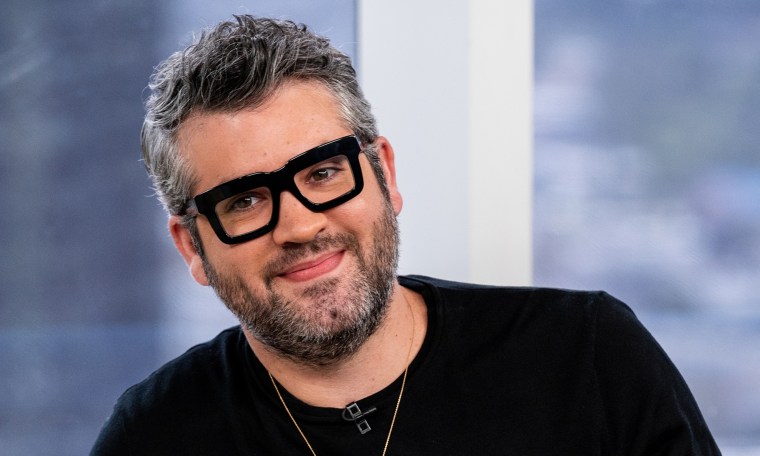Some of the country’s biggest retailers — including Target, Kohl’s and Gap — report quarterly profits this week, and investors will be listening for guidance from company executives on managing inflation, rising prices and supply chain problems. They’ll also be looking for the companies’ strategies to keep consumers — who so far have shown little inclination to stop spending — buying at their stores.
Target weighed in Tuesday morning, with quarterly earnings that beat Wall Street’s expectations. CEO Brian Cornell said that now, in its second year of pandemic-driven, supercharged sales, the company expects growth to continue, even as consumers face higher prices for food, fuel and other goods.
“They’re watching and looking for value right now, but they’re also looking for newness and experience,” he told CNBC on Tuesday. “There’s certainly a consumer who’s worried about inflation, but they’ve got a pretty healthy balance sheet right now.”
Target also said it would expand its grocery business.
Walmart, the country's second-largest retailer, behind Amazon, delivered its quarterly report last week, also beating expectations. In a page out of Target’s book, Walmart also unveiled the first spring collection from the designer Brandon Maxwell. Maxwell, who has been a judge on "Project Runway," is best known for dressing celebrities like Lady Gaga and Meghan Markle in designs that can cost thousands of dollars. He was brought on in the spring as the creative director for Walmart’s Scoop and Free Assembly brands.
The lines, which became available in about 20 percent of Walmart’s 4,700 U.S. stores last week, are part of the company’s push to attract younger, hipper shoppers — the type as interested in posting on Instagram as in stocking up on bargain socks and T-shirts.
“Collaborations like this are a good approach, and other retailers have seen success with it,” said Bryan Eshelman, a managing director in the retail practice at AlixPartners.
The most notable of the retailers is Target, whose 20 years of collaborations with Proenza Schouler, Jason Wu and other big-name designers have earned it a reputation as the home of affordable chic.
But for Walmart, the Maxwell partnership is about more than fashion. Walmart is first and foremost a grocery chain. Grocery sales accounted for 56 percent of its $572 billion in annual revenue last year. “But it’s no secret the grocery business is a thin-margin business,” Eshelman said.
With food prices up by 7.4 percent over the past year, there’s a limit to how much retailers can push those extra costs onto consumers, especially if low prices are part of the brand. But apparel and other categories provide “a little more headroom for a company’s profit margins,” Eshelman said.
Scott Cicarelli, a retail analyst with Truist Securities, said: “No one says that shirt has to be $50 or $40. The consumer doesn’t know, because it’s new and exclusive, so you have the opportunity to make extra margin.”
The typical markup on a retailer’s private-label apparel, for instance, is somewhere between 200 percent and 250 percent, according to retail analysts. So a blouse that costs $10 to manufacture would be bought by a retailer for $12 or $13, and then the retailer would sell it to the consumer at $24 to $39. For a company the size of Walmart, which wields tremendous sway over its suppliers, wholesale costs are likely to be much lower.
With the Maxwell lines, which include hundreds of items that range in price from $8 to $75, Walmart is positioning itself to capture dollars from low- and middle-income shoppers, who may have come for groceries but, feeling squeezed by rising prices for gas and energy, decide to check out the clothing.
As Covid-19 “hopefully fades into endemic, as opposed to a pandemic, people will be refreshing their wardrobe,” Eshelman said. “That will intersect with Walmart being a price leader and will be a tail wind for them.”
Walmart has done well with basic apparel in the past, but it has struggled to make a mark when it comes to fashion. In 2017, it acquired the menswear company Bonobos and the womenswear brand ModCloth. The following year, it rolled out a series of exclusive in-house apparel brands and acquired the plus-size women’s brand Eloquii. But by 2019, ModCloth had been sold off, and Bonobos had been downsized.
“They had a terrific distribution network,” said Michael Prendergast, a managing director of Alvarez & Marsal Consumer and Retail Group. “Prices were super sharp, but the value of the product you’re getting for the price was misaligned. It felt cheap in certain items.”
Gwendolyn Cranert, 26, a college student in Santa Clarita, California, has shopped at Walmart for more than 10 years. But after she bought a pair of jeans that tore when she washed them and workout clothes that quickly stretched out, she now avoids the apparel racks, she said.
“The quality is not the best,” she said. “I do like the way they design clothes, but when it comes to quality and them being long-lasting, it’s not great.”
Walmart spokesperson Jaeme Laczkowski said in an email that the company stands “behind the quality of our private and exclusive, elevated brands.” It also uses product reviews to improve products and inform its development process.
Retail experts say quality could become an even greater issue as apparel prices — which climbed by 5.4 percent in the year that ended in January, according to government data — continue to rise, leaving consumers with less discretionary income.
Cranert said that these days she shops for clothes at American Eagle Outfitters, JCPenney and Amazon. But she hasn’t ruled out the new Maxwell collections at Walmart. She’s waiting for the reviews.
“The reviews would have to be four to five stars about the quality,” she said. “I like clothing that is going to last a long time. That way I don’t have to spend more money getting clothes when it shouldn’t be the case.”
